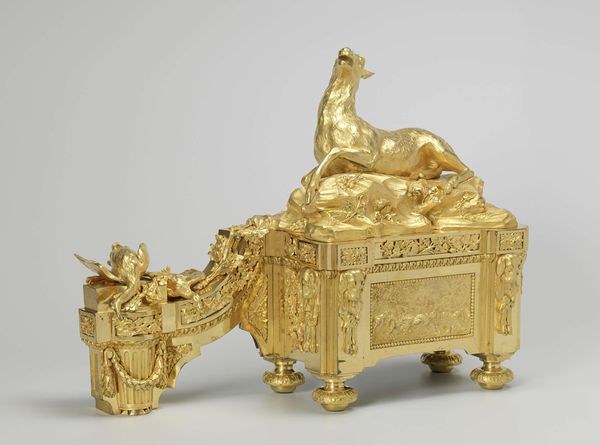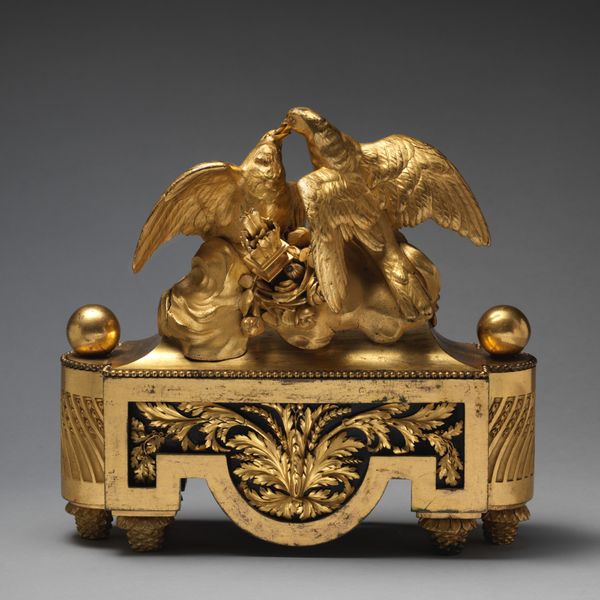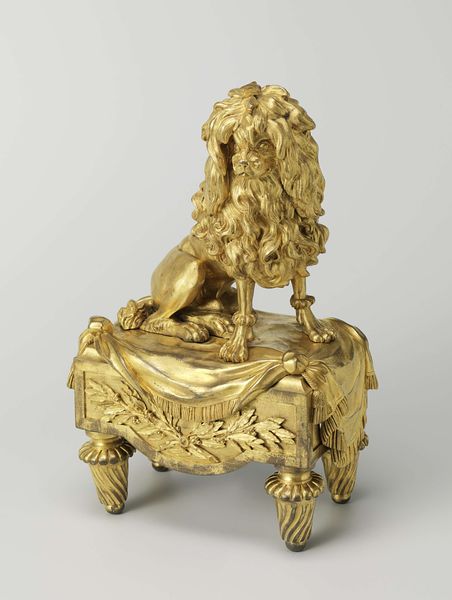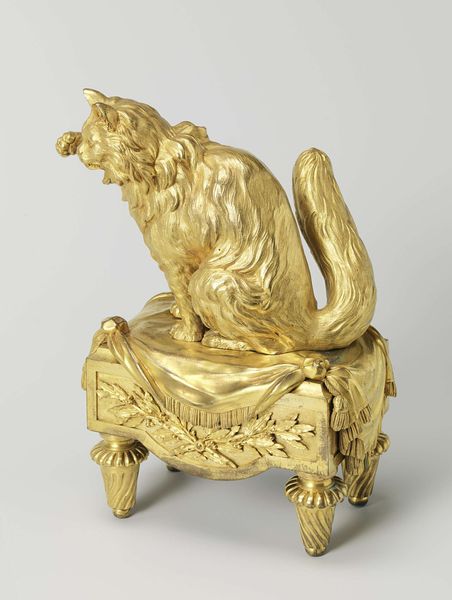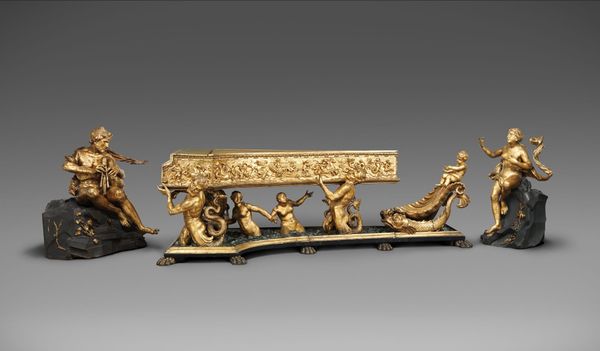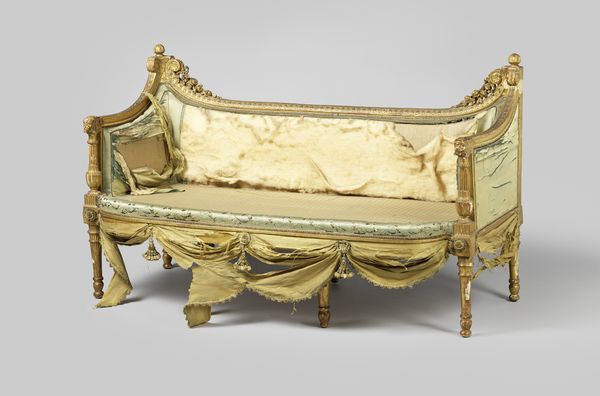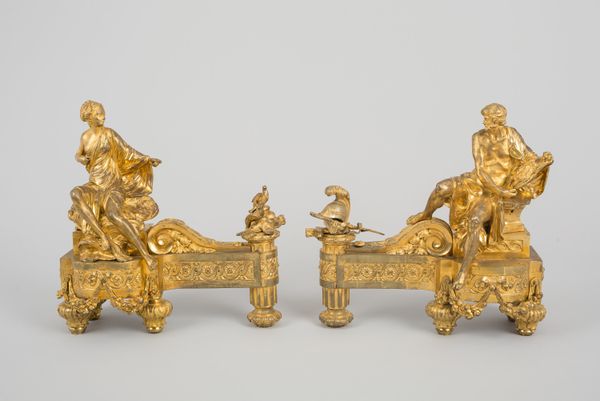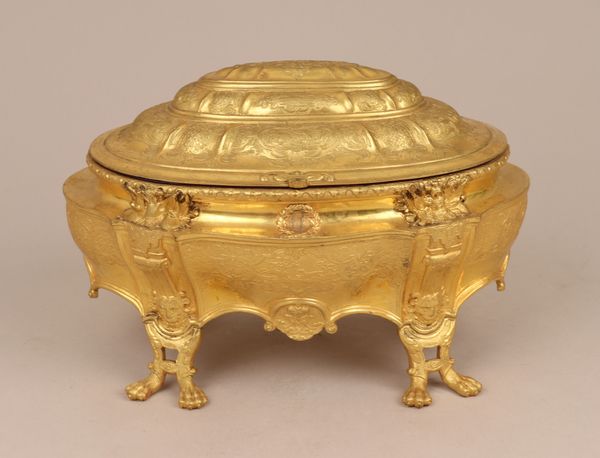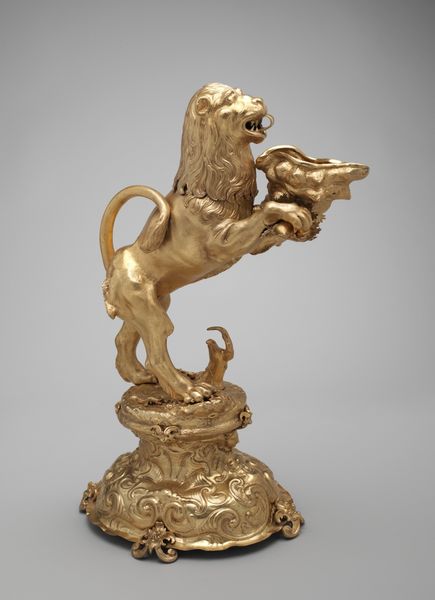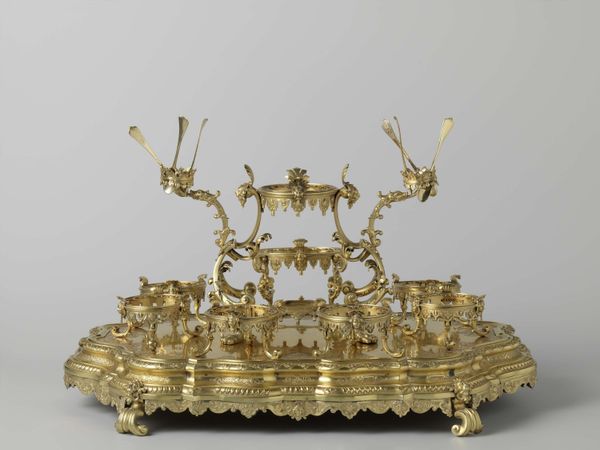
Vuurbok van verguld brons met op rechthoekig basement dierenkoppen, rozetten, druivenranken en een jachttafereel, een hert en geschoten wild. c. 1772 - 1775
0:00
0:00
Dimensions: height 40.6 cm, width 51.6 cm, depth 24.8 cm, weight 20.8 kg
Copyright: Rijks Museum: Open Domain
Curator: Immediately striking, isn’t it? It feels almost playfully opulent, dripping with golden excess. Editor: Indeed. What we’re viewing is a gilt bronze fire dog, dating back to 1772-1775. It is thought to be the work of Quentin-Claude Pitoin. Observe how its design integrates Rococo and Baroque elements. Curator: It’s intensely detailed. I love the contrast between the relatively smooth surface of the reclining animal and the intricate bas-reliefs around the base. Almost overloaded with visual information! Editor: The sheer density of motifs – the animal heads, rosettes, scrolling vines of grapes, that complex hunting tableau depicting a deer and its captured prey—serves as a showcase of elite artistic skill. Curator: And it tells a story, or fragments of many stories. The main panel seems very action-oriented, a depiction of a successful hunt; whereas the animal at the apex is so still, and contemplative almost. They almost seem to mock the hunt on the panel. What is the role and symbolism of animals for Pitoin, then? Editor: Interpreting the animals and what it means to Quentin-Claude Pitoin specifically would take more analysis but that aside I think it’s fairly safe to say it functions as more than mere decoration. We could certainly read into it themes related to dominion and the spoils of nature, common allegories used by wealthy patrons. It projects aristocratic identity. Curator: All that gilding…it isn't particularly subtle, is it? More an act of raw display, but undeniably skilled. It invites questions around material culture, and power, and wealth... Editor: Perhaps that’s its ultimate value, inviting contemplation. As well as representing the high level of artistic ability achieved in this period. Curator: So very true; It serves not merely as a beautiful artefact but as a provocative artifact.
Comments
No comments
Be the first to comment and join the conversation on the ultimate creative platform.
